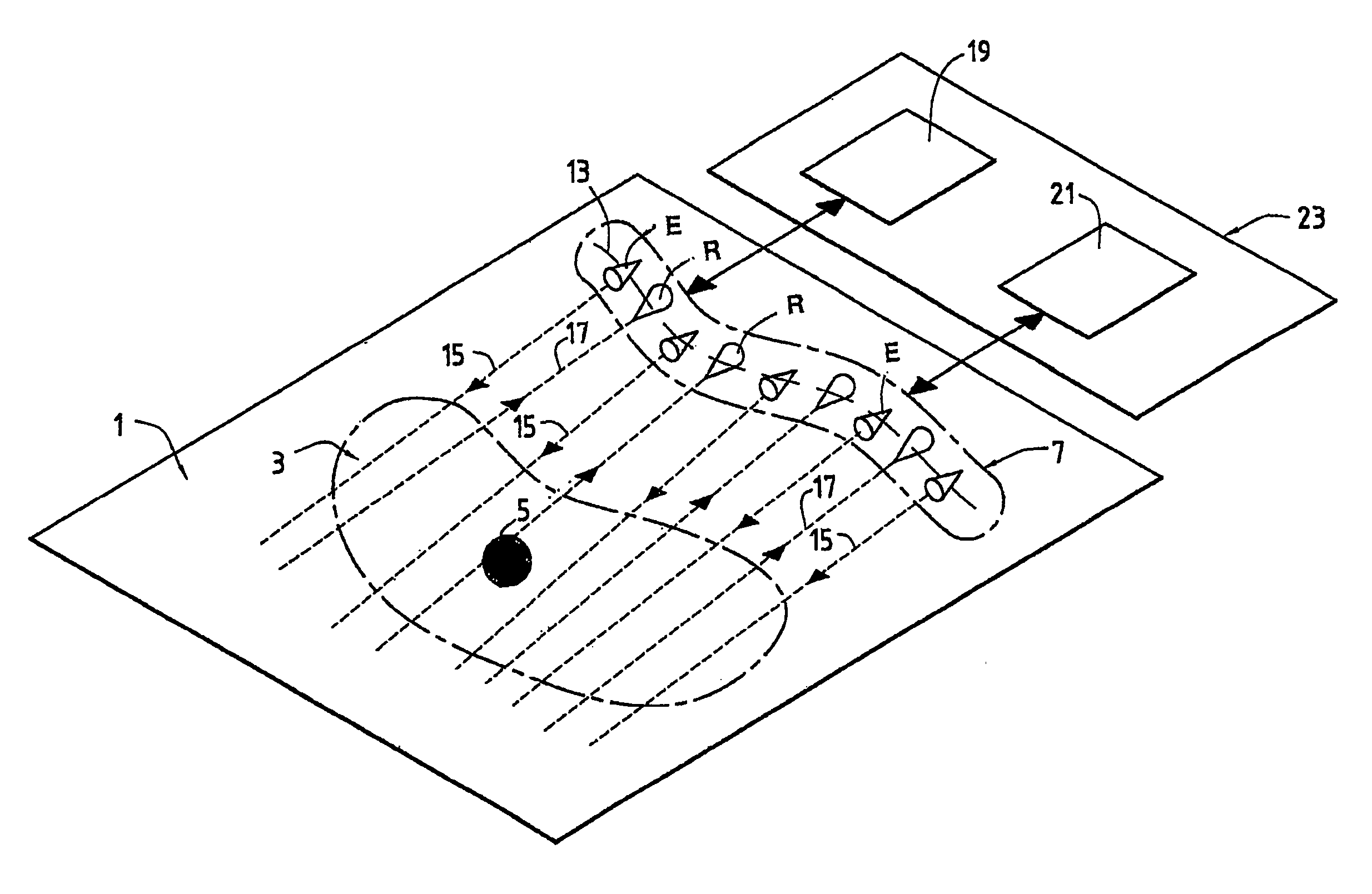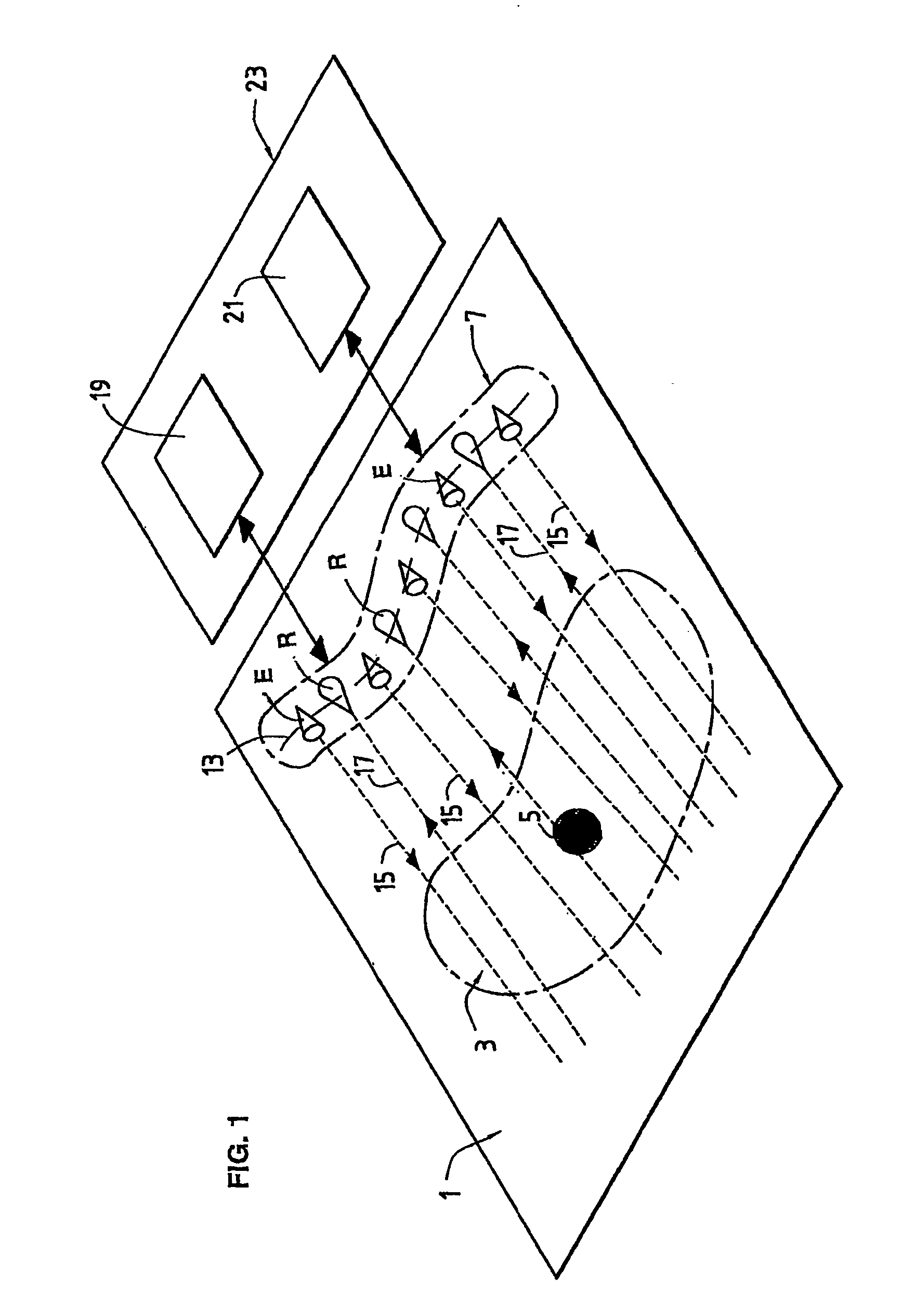Method and a device for optically detecting the position of an object by measuring light reflected by that object
a technology of optical detection and light reflection, which is applied in the direction of electronic switching, pulse technique, instruments, etc., can solve the problems of difficult adaptation of devices designed for surfaces of different sizes to surfaces of different sizes, high cost of keypads, and inability to easily adapt devices designed for surfaces of given sizes. achieve the effect of improving the detection of objects, avoiding the number of emitters, and more reliable detection
- Summary
- Abstract
- Description
- Claims
- Application Information
AI Technical Summary
Benefits of technology
Problems solved by technology
Method used
Image
Examples
Embodiment Construction
[0069]FIG. 1 shows a surface 1 including a particular area 3 on which an object 5 is to be detected in accordance with the invention.
[0070]The invention applies in particular to determining the position of an object 5 such as a finger of a user or a writing instrument or a pointer such as a stylus that is placed near or in contact with the particular area 3.
[0071]Thus this particular area 3, which corresponds to a detection area, may be of any shape and size.
[0072]Moreover, an alternating set 7 of emitters E and receivers R of light is disposed in the vicinity of the particular area 3, all on the same side of the object 5, the emitters E emitting light that covers the whole of the area 3.
[0073]In the present embodiment, the surface 1 is substantially plane.
[0074]However, this is optional, provided that the light emitted by the emitters E is not intercepted by the surface 1 in the detection area 3.
[0075]In the FIG. 1 example, the emitters E and receivers R are disposed in a single li...
PUM
 Login to View More
Login to View More Abstract
Description
Claims
Application Information
 Login to View More
Login to View More - R&D
- Intellectual Property
- Life Sciences
- Materials
- Tech Scout
- Unparalleled Data Quality
- Higher Quality Content
- 60% Fewer Hallucinations
Browse by: Latest US Patents, China's latest patents, Technical Efficacy Thesaurus, Application Domain, Technology Topic, Popular Technical Reports.
© 2025 PatSnap. All rights reserved.Legal|Privacy policy|Modern Slavery Act Transparency Statement|Sitemap|About US| Contact US: help@patsnap.com



